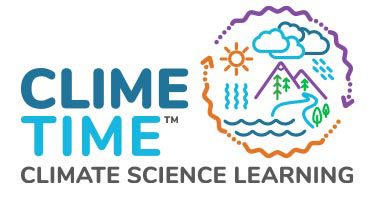Meaningful climate science education in Washington schools for a thriving, sustainable environment.
Project Portraits
Project Portraits represent the diversity of work done by ClimeTime and the many ways in which climate science and the focus on local phenomena-based learning can engage both teachers and students.
Partner Stories
ClimeTime’s partners collaborate to bring knowledge and technical training (and sometimes gadgets) to hundreds of teachers all over the state of Washington.
ClimeTime in the Classroom
Teachers are taking what they’ve learned in ClimeTime professional development classes and applying that knowledge and skills to the classroom.
ClimeTime Funding Update
In the final Washington State budget for the 2025–27 biennium, dedicated funding for the state’s Climate and Science Education Initiative (ClimeTime) was not included. Since its inception in 2018, ClimeTime has been a national model, pioneering state investment in climate education and empowering educators with high-quality, locally relevant professional learning opportunities. Over the past seven years, ClimeTime has built a powerful network of school districts, community-based organizations, educational service agencies, and tribal education organizations, all working collaboratively to bring meaningful climate science instruction into classrooms across Washington. While the loss of this state-level investment will greatly impact climate and science learning opportunities for teachers and students, we remain steadfast in our belief that climate literacy is essential to student success and to Washington’s future. The work of climate education will continue, and the ClimeTime network partners listed below remain outstanding resources for ongoing professional learning and support.
We are grateful for the progress made and optimistic that new opportunities will arise to continue advancing climate education in every corner of our state.



